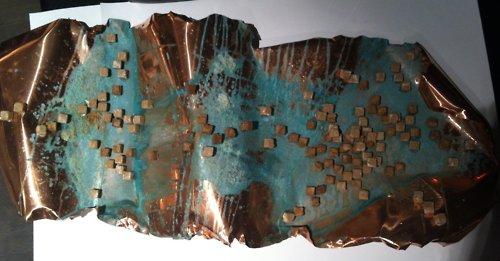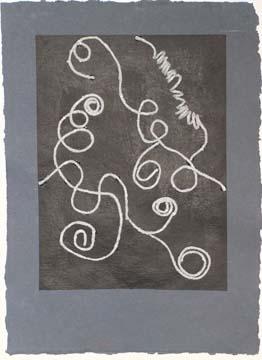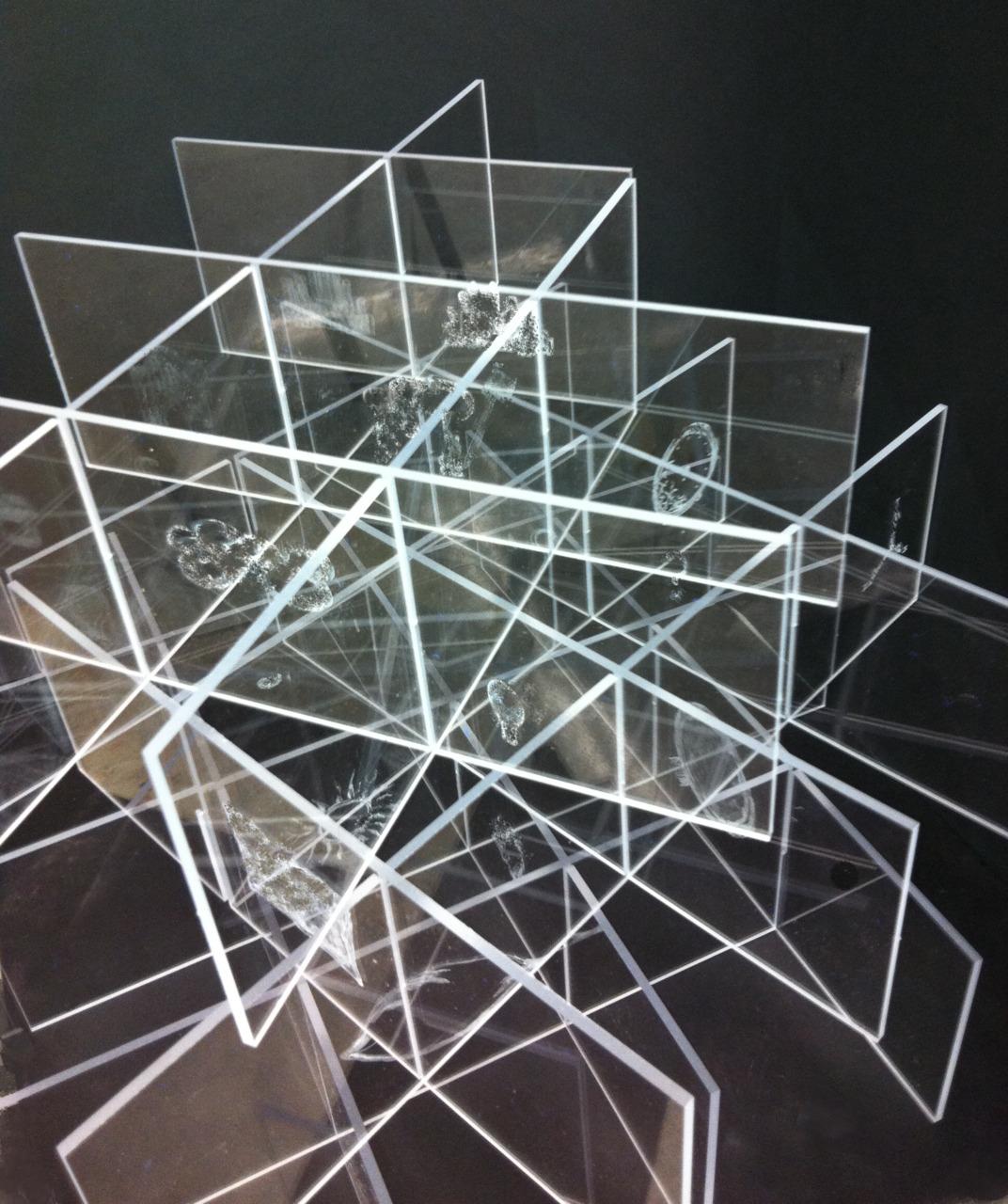On the evening of December 12, TRIUMF's main conference room changed from scientific seminar room to a discussion parlor about the parallels between art and science---and had seasoned physicists interpreting art projects from nearby Emily Carr University of Art + Design (ECUAD).
What was going on?
A test run in preparation for the worldwide art and science project, "But hbar? Particle Interactions in Physics and Arts: Artistic Transformation." Of course!
In 2010, TRIUMF named a trio of pioneering artists as its inaugural Artists in Residence: Ingrid Koenig (ECUAD), Elvira Hufschmid (Berlin University of the Arts), and Margit Schild (Berlin University of the Arts). Together, the three artists have conceived of a revolutionary arts project that builds on the emerging thesis of "artistic transformation" where inspiration is passed between artistic mediums to create a "chain reaction" of artwork that analyzes, digests, and responds to a given theme or situation. The premise of "But hbar?" is to start the chain of artistry with stimulus from particle physics. The brilliant innovation – translate the chain of artwork back into science after the process is complete, and then move to another country and repeat! The outcome will be a global arts project that wrestles with particle physics and art in multiple cultures as part of a universally human conversation about the universe and our place within it.
Using an independent study class of talented arts students at ECUAD, Schild and Hufschmid worked with Koenig to develop the basic methodology for the pilot run. In September, TRIUMF theoretical physicist David Morrissey gave the arts class a physics lecture on the search for the Higgs boson. It wasn't an educational event, however; the goal was to deliver the lecture as if it were a physics-department colloquium; that is, the arts students were to get an authentic as possible experience of what a physics-to-physics communication is like. They were then instructed to develop artwork that responded to what they got from the lecture; they then passed their artwork onto another student who interpreted that artwork to develop another original piece. After four iterations across multiple media (visual, dance, music, and sculpture), the final results were placed in the Emily Carr student gallery on December 10. Selected TRIUMF scientists attended the arts exhibit and tape-recorded their reactions to the artwork.
 |  |  |
| Rose Fior | Kirsten Bisgaard | Rose Fior |
On Monday evening, they gathered to talk with the Artists in Residence, four of the student artists, and two observers from ECUAD. The topic? How could one "translate" the physicists' experience of the artwork back into the experience, practice, or language of science?
The result was a serious and provocative discussion. Clearly, both the artist and the scientist harness a combination of personality, vision, and creativity to contribute something that goes beyond their immediate experience. By its nature, science seeks reproducibility and consistency to lend credence to an explanation. What is the analogue in art? Different audience members having a similar impression of the art? Similar artwork emerging from a common scientific inspiration or from multiple works? Moreover, does art inspired by science necessarily reflect a scientific idea or can it aim to share and recreate the experience of scientific discovery or can it evoke the feeling of satisfaction and closure that understanding grants a scientist? These ideas are not distinct and separated; perhaps the art could be engaged as "raw data" or a "scientific paper" by scientists, to fuel discussions and debates as if they were attending a conference and talking about a provocative presentation by a colleague.
Without dipping into Aristotelian forms, the evening concluded with some insight and guidance for the team putting together the larger art project. Perhaps the best way to inspire scientists with artwork is to simply give them a series of discussion questions and have them wrestle with what they see and what it means...just as in scientific peer review or a student artists' critique.
Many thanks to Elvira, Ingrid, and Margit for their pioneering efforts; and thanks to the students for their willingness and vision to contribute; and finally, thank you to the TRIUMF scientists who volunteered their time after hours to participate in this unusual "arts/science" experiment (Dave Axen, Claire David, Abishek Kumar, David Morrissey, Art Olin, and Reda Tafirout).
Stay tuned for further art and science interactions in spring 2012!
--by T.I. Meyer, TRIUMF's Head of Strategic Planning & Communications
